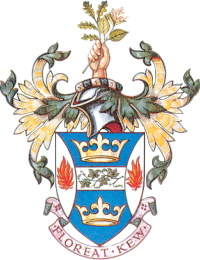


In October 2023 I enjoyed a month’s study tour of Japan, mostly focused on paper and lacquer making, two plant-based crafts well represented in Kew’s Economic Botany Collection. The year before, I began a collaboration with Prof. Siân Bowen, an artist who works with paper arts and who trained in Kyoto, and we planned this tour to give me firsthand experience of crafts in Japan. Based in Kyoto, we had wonderful encounters with indigo dyeing, basketry, paper making and lacquer sap collection in forested mountains.
Support from Kew Guild enabled me to spend a week in Tokyo with my own agenda of botany, gardens and paper. For botany, my port of call was the University of Tokyo’s botanical garden and the University Museum. The Koishikawa Botanic Garden has a strong claim to be the oldest physic garden in Japan, founded in 1638; in 1869 it became a scientific botanical garden. The gardens are particularly rich in conifers, but there is a specialist display of medicinal plants, and many mementos of the garden’s history, including its role in sheltering victims of the Great Kanto Earthquake of 1923.
Dr Diego Tavares Vasques, a fern specialist who had been at Kew in the summer, kindly showed me the charming but very full art deco herbarium at the gardens, and introduced me to the thriving botany team at the University Museum, on the Hongo campus. I was able to see the Museum’s own set of the wooden xylotheque painted by Chikusai Kato, of which we keep a set at Kew. I led a discussion on new avenues in interdisciplinary research and we explored future collaboration. We ended this day at the University’s Intermediatheque, in the old GPO next to Tokyo Station, a large and beautifully presented introduction to the university collections.
Tokyo is a busy place but relief from the crowds can be found at the nine metropolitan gardens scattered in the city, typically the former residences of nobles. For obvious reasons this genre of very extensive Japanese landscape garden is rare in Europe. Rikugien is based on Chinese landscapes; Koishikawa (not to be confused with the university garden) is notable for its water walks. Both offer expansive panoramas of green backed by the Tokyo skyline.
A short journey to Tokyo’s northern suburbs took me to the Paper Museum, where the curators generously showed me a wide range of Meiji papers from the museum store. It was fascinating to see what is and is not represented at Kew, and I was able to share some insights from our recent research. My second paper excursion was unexpected, following a lead from the excellent Aoyama Square crafts centre I visited the Edo Karakami workshops near Ueno station. Founded in 1690, this is one of a handful of studios still making block-printed papers for use in paper screens. The Matsuya family were very generous in demonstrating the craft to an unannounced visitor, and gave me a hefty bundle of papers to bring back for the Kew collection.
This was my first visit to Japan and to Tokyo, but not my last. I have a rich haul of contacts and ideas for future visits and projects.
Mark was awarded £800 from the Kew Guild.
